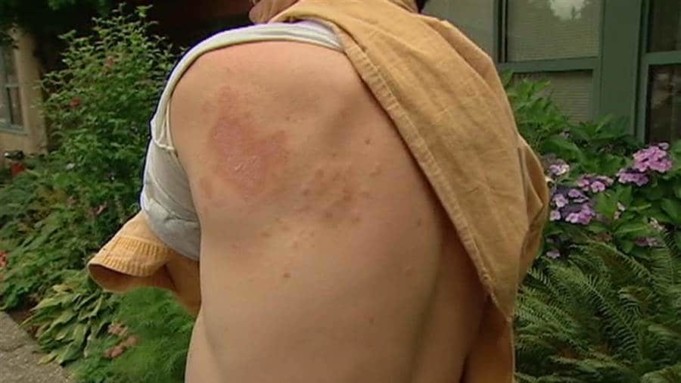Shingles is caused by a virus named varicella-zoster, the same virus that causes chickenpox. It is an infection of a single nerve and the skin surface that is supplied by the nerve.
Even though if someone is recovered from the chickenpox, they can still develop this disease. There are over one million cases reported of Shingles in the United States only.
An approximate of 1 out of 3 people develops this disease during their lifetime. The most common age group that gets victimized by this condition is fifty and above.
However, the virus can reappear for people of all ages that have previously acquired chickenpox.
What are the symptoms?
The most common symptom of shingles is pain. This can either be a constant burning or gnawing pain or either comes in intervals. A blistering skin rash may occur as well. It typically occurs in one or more bands termed as the dermatomes.
It can even appear on the face in one band or break out on quarter of the face.
Commonly, shingles adopts the following course:
- Acute pain, numbness and itching on a particular part of the skin. The pain then eventually results into appearance of a rash, between one and five days after the pain.
- Emergence of red blotches that gradually changes into itchy fluid-filled blisters.
- The rash may even appear on face, mouth, eyes and ears in some cases.
- Optical shingles occur when the shingles targets the eye. It results into painful eye inflammation and can also lead to temporary loss of eyesight.
- New blisters may appear for a week.
- The blisters eventually dry up and leads to crusts or scabs within seven to ten days. At this point in time, the rash in not considered infectious.
- A scarring may even occur where the blisters have been.
- The whole episode may span from two to four weeks.
There are a number of other symptoms that may occur as well such as fever, headache, nausea, chills, muscle pain, joint pain and swollen glands.
Seldom, it leads to pneumonia, brain inflammation or even death. This usually occurs when the victim already has a weakened immune system.
Even though most people do not get indulged into a number of difficult complications, but this disease can have potential long-lasting effects like skin infection, eye problems, weaknesses, white patches and inflammation of brain.
Furthermore, this post from health form shows other signs and symptoms regarding the disease.
Contagiousness
Shingles is not passed from one individual to another however, the virus that causes this disease can be passed from a person with shingles at active stage to someone who has never had chickenpox. In such cases, the individual would not get shingles but chickenpox.
It is not spread through sneezing or coughing but through direct contact with fluid from blisters. The victim is not contagious before the blisters develop. However, it is less contagious then chickenpox.
Treatment
At current point in time, there is no way to completely eliminate shingles virus from the body. However, there are several ways in which symptoms can be eased. Here are some of them listed:
- Loose-fitting clothes can be utilized for comfort.
- There is a variety of lotions available online that can relieve itching.
- Rash must be kept dry and clean to decrease the risk of infection.
- Doctors may even prescribe a pain-killing medicine.
However, there are vaccines that can prevent chickenpox as well as shingles. The Zostavax vaccine is recommended by medical professional for people 60 years and above.
Since the vaccination begins for childhood, the number of shingle cases have dropped substantially.
Nevertheless, everyone must consult medical professionals before getting this vaccine. Also, you need to do your research and determine if vaccines are right for you. People with severe allergy to gelatin may result into grave side-effects. Anyone with a weakened immune system must avoid this vaccine as well. Furthermore, pregnant women must avoid it as well.
Conclusion
Here was a detailed explanation of all the things you need to know about the Shingles disease. Given the potential dangers, it is imperative for individuals to spread the awareness to minimize its risk and help the community as a whole.












